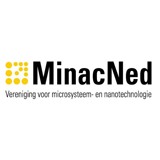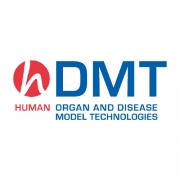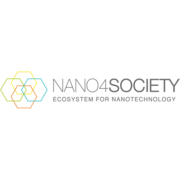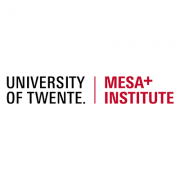The Netherlands Enterprise Agency (RVO, Rijksdienst voor Ondernemend Nederland) organises an innovation mission to Japan from 10 – 14 October 2022. Are you actively involved in photonics, quantum- or nanotechnology? And do you want to explore the opportunities and developments of these three key enabling technologies in Japan? Then please, read more about this event and join the mission.
Quantum technology, nanotechnology and photonics (integrated photonics, optical) are essential key technologies in the Netherlands and Japan. Therefore, both countries are strongly investing in further development of these technologies to contribute to solving all kinds of societal challenges – for example, safety, sustainability, economics and life science.
For who?
This mission is interesting for Dutch governments, industries, and knowledge institutions. The mission focuses on the professionals who work at the interface of photonics, quantum and nanotechnology.
Goals of this mission
The goals of this innovation mission to Japan are:
- Exploring and finding potential partners for joint research, development and commercialisation of technological innovations in the field of photonics, quantum and nanotechnology;
- intensifying bilateral cooperation between government, industry and knowledge institutes;
- developing bilateral schemes and programmes to support bilateral cooperation;
- And positioning the Netherlands in EU programmes through relations with Japan.
Are you interested? Please, visit the website of the RVO for the whole programme, an information meeting on 15 June 2022 in The Hague, costs and registration (before 28 June 2022).
On Thursday April 14th the Dutch government announced the projects that were approved for the Nationaal Groeifonds (The National Growth Fund, The National Growth Fund | English | Nationaal Groeifonds). The government will be investing €20 billion through the Growth Fund between 2021 and 2025. That money will go to public-private projects that have the potential to contribute to future economic prosperity. Among the projects that have been approved a number will apply nanotechnology to develop solutions for major societal challenges. Of particular interest are NXTGEN HIGHTECH that was awarded 450 M€ and PhotonDelta that was awarded 470 M€.
PhotonDelta is an international ecosystem of organizations in integrated photonics. PhotonDelta aims at developing photonic tech that will tackle societal challenges such as sustainability, create a new European industry, and open the door to a huge range of new applications including quantum computing. The capital from the Dutch National Growth fund and other organizations will be used to build start-ups, scale up production, create new applications for photonic chips and develop infrastructure and talent.
The NXTGEN HIGHTECH program aims at developing a new generation high-tech equipment. This program will provide a significant contribution to the competitiveness, earning capacity and employment of the Netherlands. It will help address some of the larger societal challenges ahead (Health, energy, sustainability, etc.).
With the start of this new round of projects for the National Growth Fund, QuantumDeltaNL was approved for the second installment of funding. Nano4Society already plays a role within the QuantumDeltaNL growth fund and will seek synergies with the newly approved projects.
In 2021 and 2022, MinacNed will host pre-events leading up to the international MicroNanoConference 2022. The symposia are live events in The Netherlands, offering an interesting program with speakers from industry and science, with an opportunity for networking.
On November 23, a Micro Nano Symposium will be organised around the 2021 Groeifonds application. The consortium of partners from science and industry responsible for program will celebrate the submission of their application, specifically the focus theme Biomedical production technology under the NXTGen High Tech
From Science to Market: Biomedical Production Technology
Biomedical production technology fails to keep pace with innovations in the biomedical domain. The (academic) knowledge in the Netherlands is at a very high level in the field of Lab-on-Chip, Organ-on-Chip, Artificial Organs and Cell production technology, but is not (properly) converted into products. The main reason for this is that a multidisciplinary chain is required of suppliers of high-quality specific components in both the technological and biological field. Although the required parties are present in the Netherlands, their production equipment and processes are not yet compatible with each other. These major challenges cannot be solved by a few parties, but a large collaboration is needed to be able to design and functionally qualify products from the existing developed building blocks (e.g., sensors, chips, biomaterials) in order to subsequently achieve upscaling and the growing (world) market.
MinacNed, hDMT, MESA+ and Nano4Society organize a pre-event of the international MicroNano Conference 2022 to address this topic and will present steps that are currently being taken to establish an ecosystem with a unique and first-of-its-kind production chain in the Netherlands.




Organizers: hDMT, MinacNed, MESA+, Nano4Society
Date: 23 November 2021, 14.00 – 17.00
Location: The Gallery, University of Twente, Enschede
(The Gallery, Hengelosestraat 500, 7521 AN Enschede)
Preliminary program
13.30 – 14.00 Arrival with coffee and tea
14.00 – 14.10 Opening and welcome, Janny van den Eijnden-van Raaij (chair, hDMT) and Albert van den Berg (MESA+)
14.10 – 14.40 Tom van der Horst (TNO), Overview NXTGEN HIGHTECH
14.40 – 15.10 Berend van Meer (hDMT): “A national ecosystem for biomedical production technologies”
15.10 – 15.40 Coffee Break and networking
15.40 – 16.10 Marko Blom (Micronit, Enschede), NXTGEN HIGHTECH: perspective from high tech industry: “Challenges and solutions for scaling from fabrication of prototypes to repetitive manufacturing”
16.10 – 16.40 Jasper Boomker (Kidney Foundation) NXTGEN HIGHTECH: perspective from end user: “Closing innovation gaps: the case of the artificial kidney”
16.40 – 17.00 Panel discussion
17:00-17:30 Drinks and networking
Invited keynote speakers include science and industry partners, a government overview of the importance of these partnerships and the point of view from an end user. After these great talks, the inspired attendees can meet and greet in a network setting with drinks to formalize future partnerships. The event is a live event in Enschede, at the location The Gallery.
You can now register (free of charge) to attend the event for one of the limited seats.
Registration Micro Nano Symposium
From Science to Market: Biomedical Production Technology
The international MicroNanoConference is the MinacNed conference for and by members. We are organizing this conference together with a group of members from both industry and science. These enthusiastic volunteers bring their own background and network to set up a program for the iMNC21.
From surveys we have taken after past iMNC events we have learned that participants see great value in the networking opportunities at the iMNC. An online platform offers fewer networking opportunities, therefore the organization has focused on an event in the Jaarbeurs, Utrecht.
With that in mind, this year’s iMNC21 location had been reserved, an international group of speakers had been invited and a fantastic program was set up that addresses both technical themes and more societal themes. However, for a successful event we not only need a well-organized and substantive program, but above all we also need the commitment and support of participants and exhibitors.
In these times of great uncertainty due to the Covid-19 measures, it turns out to be extremely difficult to get sufficient certainty in time to organize a conference with a large (international) participation.
As a result, we saw two risks arising. There was a risk (due to insufficient participants and sponsors) that the costs would be higher than the income. There was an equally great risk for participants and for exhibitors who invest in an event that would not offer sufficient networking opportunities to achieve the objectives. As MinacNed and the entire team organizing the iMNC21, we must avoid these risks. That is why the MinacNed board has unfortunately had to decide to cancel the iMNC21 conference this year.
The board of MinacNed would like to thank all members, OC and PC committee members and all those involved who have already committed themselves to the preparations for their contributions and also apologize because these preparations will unfortunately not lead to the iMNC21.
The team is currently working out whether the lecture program that has been put together for iMNC21 can be presented in a different way. This could be organized either in small local events or online. It is not yet clear in what form and on what dates these events will take place. We will keep you informed.
The ‘Groeifonds’ proposal NXTGEN HIGHTECH is selected to be worked out in detail to be submitted in October 2021. The Netherlands is an international leader when it comes to ultra-precision high-tech equipment and aims to exploit this expertise in NXTGEN HIGHTECH for production of Organs-on-Chips, among others. In total, 28 projects were selected from 244 initial submissions.
The ‘Topsector HTSM’ has, in close collaboration with knowledge institutes, governments, industry and other topsectors, initiated this widely supported programme (budget € ~1.5 billion) to develop the next generation High Tech Equipment for these industries. One of the six domains of NXTGEN HIGHTECH is ‘Biomedical Production Technologies’ and is being coordinated by Berend van Meer on behalf of hDMT. This domain aims at large scale production of Labs-on-Chips, Organs-on-Chips, Artificial Organs and Cell Production Equipment, in which industrial standardisation and qualification are indispensable.
In case the project will be funded, hDMT partners will be involved closely in the further elaboration and setup of the next steps. For more information about NXTGEN HIGHTECH see https://www.hollandhightech.nl/nxtgen-hightech and about the National ‘Groeifonds’ see https://www.nationaalgroeifonds.nl/.
Several MedTech initiatives from Twente have been awarded REACT-EU funding. The millions in subsidies will give the relevant companies and researchers in Twente an enormous boost, demonstrate the potential of MedTech in the region and strengthen Kennispark Twente as a MedTech hotspot.
Green light for MedTech Factory
In the MedTech Factory, start-up and fast-growing companies in medical technology will soon have access to high-quality and affordable microbiology labs. They can rent flexible space at the MedTech Factory until they are large enough to have their own building. The concept can be realised by initiators Novel-T and Kennispark Twente with the 3.1 million EFRO subsidy and the contribution already allocated from the RegioDeal via TwenteBoard.
Together with its regional partners, Novel-T recently presented its ambition to give the MedTech cluster in Twente a solid boost in the coming years. In September 2020, Jaap Beernink (CEO of Novel-T) and Eddy van Hijum (member of the Provincial Executive of Overijssel) presented an investment agenda on behalf of the regional cluster to State Secretary Mona Keijzer. On this agenda, affordable lab facilities were high on the priority list.
Anne-Wil Lucas, Area Director of Kennispark: “This grant is fantastic news for the region and Kennispark Twente. Without these subsidies, such facilities would never get off the ground, while they are essential for the continued growth of companies. This will ensure that we can retain Twente’s MedTech companies and attract companies from outside Twente.”
Consortia of knowledge institutes and Twente MedTech companies
In addition to the MedTech Factory, the other REACT-EU awards include various consortia of Twente MedTech companies and the University of Twente. These are collaborations that aim to use medical technology to contribute to an improved and affordable healthcare sector. These projects demonstrate the innovative capacity and power of cooperation within the regional cluster.
Innovations for the treatment of dementia and improved detection of breast cancer
For example, over 1.5 million euros was awarded to the ‘reMIND’ initiative, in which Demcon, Micronit and Locsens are consortium partners. Within reMIND, the parties bring together four different technologies to better treat dementia.
A second consortium, consisting of PA Imaging, Hemabo and the University of Twente in collaboration with Radboud UMC, will receive up to EUR 2.6 million for bringing photo-acoustic mammography to the patient.
A third example is the consortium formed around LioniX International, which includes Bronkhorst High-Tech, SurfiX, Qurin Diagnostics and PHIX. Together they are working on the SensorChip aimed at developing various types of gas, liquid and biosensors. They will receive over EUR 2.5 million for this project.
Finally, the Enschede-based company ILT Fineworks is involved in the industrialisation of the ELENA Heart Technology, for which a maximum of 1.7 million euros has been granted.
Jaap Beernink, CEO of Novel-T: “The award of these REACT-EU grants for both specific innovation projects and for strengthening the facilities in the ecosystem are of great importance for the development of the rapidly growing MedTech cluster in Twente. Innovative growth companies are the driving force behind this. For the region, the impact of these companies is particularly large, both from a social and economic perspective.”
About MedTechTwente
MedTech Twente is the innovation hub where medical technology is accelerating. For the past 15 years, the business community and healthcare institutions have been working closely together with researchers from the knowledge institutions to develop innovations for tomorrow’s healthcare. Innovations are developed, validated and implemented in close cooperation between parties, facilitated and accelerated by supporting organisations such as Novel-T, OostNL, VitaalTwente, HIP, WTC and HealthValley. It is therefore not without reason that successful MedTech companies such as Demcon, Medspray, Micronit, Lipocoat and IAMFluidics were founded and have grown in Twente.
About REACT-EU
The European Union is working with its recovery programme EU Next Generation on a fast, green, digital and resilient recovery of the regional economy. Under the name REACT-EU, 47.5 million euros – of which 5.9 million euros government co-financing – has been made available for the East Netherlands in 2021. This amount will be awarded to projects that have successfully submitted an application by 1 April. These projects must be completed by the end of 2023 so that the regional economy can recover as quickly as possible. The extra money has therefore been made available through the existing EFRO programme OP East 2014-2020. In OP Oost, the provinces of Gelderland and Overijssel work together to stimulate smart, sustainable and future-oriented projects at companies in the East Netherlands.
Source news: Kennispark Twente
New Photonic Integration Technology Center (PITC) to advance innovations for global technological and societal challenges with revolutionary chip technology.
On 2 June 2021, the integrated photonics industry accelerator PhotonDelta, research institute TNO, Eindhoven University of Technology and University of Twente will sign a cooperation agreement for the new Photonic Integration Technology Center (PITC) in the Netherlands. This centre will speed up the commercialisation of Integrated Photonics for applications such as autonomous mobility, healthcare, data & communications. The signing will be part of an online launch event which is open to everyone who has registered through https://pitc.nl/launch/
Integrated Photonics represents a revolutionary technology that allows the development of chips that can sense, capture and process huge amounts of data using light instead of electricity. By using light we can create new types of devices and systems, complementary to those that use electronics. Photonic integrated circuits pave the way for devices and systems that are cheaper, faster, lighter, more robust and reliable while using less energy. This opens new perspectives for developing purposeful digital solutions.
Bridging the gap between research and application
The new PITC is an independent R&D and innovation centre that brings photonic technologies to industrial maturity, builds partnerships, strengthens the photonics ecosystem, and links it to a global customer base.
Accelerating commercial adoption of integrated photonics
Customers get access to technology and know-how at an early stage while sharing the costs and risk of new technology development. The jointly developed innovations will be extensively tested for reliability and stability, facilitating the route to production.
Integrated photonics is a key enabling technology with a wide spectrum of applications allowing to respond promptly and efficiently to societal challenges of today and tomorrow.” says Carlos Lee, General Director of European Photonics Industry Consortium (EPIC), “The Photonic Integration Technology Center brings the integrated photonics to a level that it can be easily adopted by industry. This great ambition makes the PITC a perfect fit to the EPIC ecosystem.”
PITC offering
Specific PITC tasks will be:
- Developing technology in shared innovation programs
- Ensuring a smooth path to manufacturing ans commercialisation
- Providing access to high-tech infrastructure and facilities
- Supporting talent development for skilled professionals that build tomorrow’s high-tech ecosystem in the Netherlands.
PITC is a cooperation between PhotonDelta, TNO, University of Twente and Eindhoven University of Technology, and is enabled by Brainport Development, the Ministry of Economic Affairs & Climate, regional growth accelerators BOM and OostNL and the provinces of Noord-Brabant, Overijssel and Gelderland. PITC is located on the premises of Eindhoven University of Technology and University of Twente in the Netherlands.
Tools for nano imaging and fabrication
On Thursday 10 June 2021 at 9.00 am Dutch time, the Dutch Embassy in Tokio is hosting a webinar ‘Tools for Nano imaging and fabrication’ on behalf of the Business Cluster Nanotechnology. The Embassy has lined up some prominent speakers for this webinar. Anyone interested can register for the webinar, so feel free to share the flyer with your contacts whether they are based in The Netherlands, Japan or elsewhere.
Download the flyer with the full program and registration link here.
A team of researchers from QuTech in the Netherlands reports realization of the first multi-node quantum network, connecting three quantum processors. In addition, they achieved a proof-of-principle demonstration of key quantum network protocols. Their findings mark an important milestone towards the future quantum internet and have now been published in Science.
The quantum internet
The power of the Internet is that it allows any two computers on Earth to be connected with each other, enabling applications undreamt of at the time of its creation decades ago. Today, researchers in many labs around the world are working towards first versions of a quantum internet – a network that can connect any two quantum devices, such as quantum computers or sensors, over large distances. Whereas today’s Internet distributes information in bits (that can be either 0 or 1), a future quantum internet will make use of quantum bits that can be 0 and 1 at the same time. ‘A quantum internet will open up a range of novel applications, from unhackable communication and cloud computing with complete user privacy to high-precision time-keeping,’ says Matteo Pompili, PhD student and a member of the research team. ‘And like with the Internet 40 years ago, there are probably many applications we cannot foresee right now.

Co-authors Matteo Pompili (left) and Sophie Hermans (right), both PhD student in the group of Ronald Hanson, at one of the quantum network nodes.
Towards ubiquitous connectivity
The first steps towards a quantum internet were taken in the past decade by linking two quantum devices that shared a direct physical link. However, being able to pass on quantum information through intermediate nodes (analogous to routers in the classical internet) is essential for creating a scalable quantum network. In addition, many promising quantum internet applications rely on entangled quantum bits, to be distributed between multiple nodes. Entanglement is a phenomenon observed at the quantum scale, fundamentally connecting particles at small and even at large distances. It provides quantum computers their enormous computational power and it is the fundamental resource for sharing quantum information over the future quantum internet. By realizing their quantum network in the lab, a team of researchers at QuTech – a collaboration between Delft University of Technology and TNO – is the first to have connected two quantum processors through an intermediate node and to have established shared entanglement between multiple stand-alone quantum processors.
Operating the quantum network
The rudimentary quantum network consists of three quantum nodes, at some distance within the same building. To make these nodes operate as a true network, the researchers had to invent a novel architecture that enables scaling beyond a single link. The middle node (called Bob) has a physical connection to both outer nodes (called Alice and Charlie), allowing entanglement links with each of these nodes to be established. Bob is equipped with an additional quantum bit that can be used as memory, allowing a previously generated quantum link to be stored while a new link is being established. After establishing the quantum links Alice–Bob and Bob–Charlie, a set of quantum operations at Bob converts these links into a quantum link Alice-Charlie. Alternatively, by performing a different set of quantum operations at Bob, entanglement between all three nodes is established.

Researchers work on one of the quantum network nodes, where mirrors and filters guide the laser beams to the diamond chip.
Ready for subsequent use
An important feature of the network is that it announces the successful completion of these (intrinsically probabilistic) protocols with a “flag” signal. Such heralding is crucial for scalability, as in a future quantum internet many of such protocols will need to be concatenated. ‘Once established, we were able to preserve the resulting entangled states, protecting them from noise,’ says Sophie Hermans, another member of the team. ‘It means that, in principle, we can use these states for quantum key distribution, a quantum computation or any other subsequent quantum protocol.’
Quantum Internet Demonstrator
This first entanglement-based quantum network provides the researchers with a unique testbed for developing and testing quantum internet hardware, software and protocols. ‘The future quantum internet will consist of countless quantum devices and intermediate nodes,’ says Ronald Hanson, who led the research team. ‘Colleagues at QuTech are already looking into future compatibility with existing data infrastructures.’ In due time, the current proof-of-principle approach will be tested outside the lab on existing telecom fibre – on QuTech’s Quantum Internet Demonstrator, of which the first metropolitan link is scheduled to be completed in 2022.
Higher-level layers
In the lab, the researchers will focus on adding more quantum bits to their three-node network and on adding higher level software and hardware layers. Pompili: ‘Once all the high-level control and interface layers for running the network have been developed, anybody will be able to write and run a network application without needing to understand how lasers and cryostats work. That is the end goal.’
Source: QuTech news item




